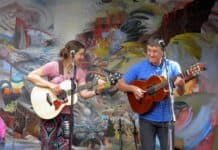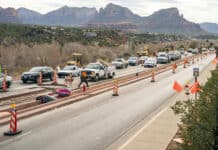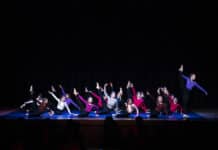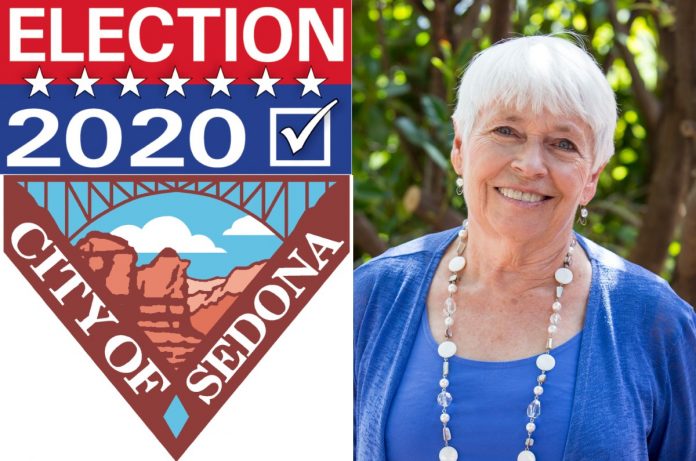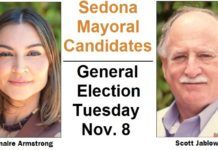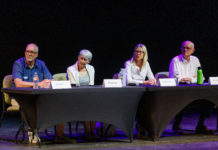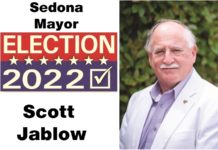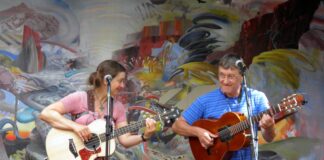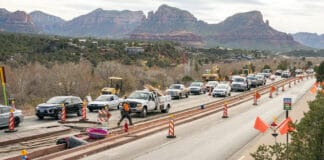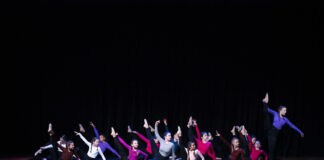Incumbent mayor Sandy Moriarty is running for re-election against Kurt Gehlbach in the Aug. 4 primary election.
Candidate Interview
Q: Why are you qualified to be mayor?
I have served as mayor since November of 2014. Prior to that, I served on the Housing Commission for six years and on the first appointed City Council when Sedona was incorporated in 1988. I have been a resident of Sedona for 48 years, so I know Sedona well. I currently serve on the Executive Committee of the League of Arizona Cities and Towns and on two of their policy committees, one of which I chair.
Q: During these difficult times, what specific steps will you implement to help Sedona’s economic recovery?
No one council member, including the mayor, has the authority to act on behalf of the city without the approval of the Council. Any specific steps would therefore require council approval.
All cities in Arizona must have balanced budgets, so with revenues declining, the principal means of financial assistance for businesses must come from the federal government, which is able to run deficits and offer loans of various kinds as well as additional unemployment benefits. Our Director of Economic Development and staff have been assisting businesses with the various applications required to tap into these types of government assistance. In addition, they also continue as always with various workshops, trainings and counseling tailored to the needs of local businesses. We also have a goal of encouraging economic diversity and entrepreneurship.
Q: What are the top three issues facing Sedona right now [aside from COVID-19 and the economic slowdown]?
Traffic issues are always on the list. My goal from the beginning has been to complete the comprehensive transportation study, develop a plan and implement the plan. We are now implementing our major multi-modal Transportation Master Plan, known as Sedona in Motion, or SIM, and we adopted a half-cent sales tax to help fund it. It includes 14 major strategies, of which two are long term and off the table for the time being. We are about to complete the Uptown Roadway Improvements Project to add an additional southbound lane, a new connector road from southbound 89A to our free parking lot, two roundabouts, a landscaped decorative median and a decorative median and extended sidewalk on the north side of Forest Road. There are other projects that are in the design phase, including a pedestrian underpass crossing at Tlaquepaque and the Forest Road extension to connect Uptown neighborhoods to W. SR 89A.
A balanced budget and fiscal responsibility are especially important as we face the financial challenges of the abrupt economic slowdown caused by the pandemic. We have planned wisely over the last five years by maintaining a larger reserve fund than most Arizona cities, in addition to adopting budget strategies for replacement of capital items and generally conservative budgeting which will serve us well in these difficult times.
Sustainability issues, including sustainable tourism and the protection of our great natural beauty, the cornerstone of our economy, is always a critical issue. Our many trails, fabulous scenic views, dark skies, clean air and clean water make Sedona the most beautiful place on earth, and it is a priority to keep it that way. Our Sustainability Coordinator has played a major role by developing a Climate Action Plan and making sure city operations provide a model for how to make sustainability a part of our daily lives.
Q: How will you keep Sedona affordable for residents?
Our Community Plan calls for a range of housing options. A major problem is that the cost of land has remained high, even during the pandemic. In addition, Sedona has never had a large supply of apartment or any other type of multifamily dwellings. The Housing Commission created a Housing Fund and an incentive program for developers in 2007, which still exists. The current Housing Committee, of which I am a member, hopes to pick up where the Housing Commission left off, and following recent density changes in the Land Development code, the city was able to work with the developer of Pinon Lofts to create 41 units of apartment housing, the largest in Sedona to date. The committee is looking at other ways to create affordable units, including tiny houses, and worked with
Habitat for Humanity to create the recently completed tri-plex in Uptown.
Q: What are your goals over the next two years?
I look forward to working with the other council members to complete current climate, sustainability and transportation plans and continuing work with the state legislature to change state law in order to better manage short-term rentals at the local level.
Q: How will you appeal to or reach out to the majority of residents, not just the loudest voices in the council chambers?
I believe we must use every tool in the toolbox to reach as many residents as possible. This would include the many emails we get from citizens, our Citizen Engagement Program, continuous improvement of our website, use of social media and building our list of citizens who sign up for E-Notify. We also offer the Citizens Academy, a program to acquaint citizens with how city government functions, and we use survey instruments on an as-needed basis.
Q: How will you reach consensus among six other council members?
We always discuss issues before the council in open meetings as required by law. We listen to each other, we ask questions of each other and of staff, we state our positions and discuss them. There are times when consensus is needed and there are times when we simply vote on the issue. We do not always agree, but we do make decisions based on the vote.
Q: Sedona looks to lose $10 million this year. How will you cut the budget?
We have had our budget work sessions, so we have basically reached consensus on a tentative budget, which is a matter of record. Arizona law requires that once we set a tentative budget limit, we cannot exceed it. The approach this year included eliminating all non-essential expenses and freezing them until we have evidence that they can be accommodated. This includes filling vacancies, wage and salary adjustments, training and travel, equipment replacement and purchase, and food.
Candidate Essay
I have had the honor and privilege of serving as Sedona’s mayor for over five years, and the pleasure of living in Sedona for 48 years — longer than I have lived anywhere else.
I was born and raised in Seattle, attended Whitman College for one year and graduated from the University of Washington. Before coming to Sedona, I spent a few years living in other places: Fairbanks, Alaska, The Dalles, Ore. and Marathon in the Florida Keys, but I am now happy to call Sedona home.
I got involved in getting Sedona incorporated soon after my arrival in January of 1972. It was a special challenge because we are in two counties, so we had to begin with changing state law to allow it. Nearly 16 years later, after a successful December election, Sedona officially became a city on January 4, 1988, and I was excited and proud to be a member of the first appointed City Council.
Governing in Sedona has changed significantly over the years, but never in the way it has changed in the last four months. I believe there has never been a time in the 32 years Sedona has been incorporated when an emergency proclamation has been issued.
The global pandemic of COVID-19 has resulted in unusual and extraordinary times and brought more uncertainty from an invisible and unpredictable enemy than most of us have experienced in our lifetimes. As conditions change dramatically daily, even hourly, it is a challenge to keep up and adjust. But we are innovative and resilient, and I know we will get through this together, and emerge even stronger on the other side.
Our goals for the city remain largely the same, although the path to reach them and the timeframe may change somewhat as we focus on health and safety, now even more than ever. Because we have budgeted wisely in the past, our financial health is good, so we can move ahead with city operations and functions. We will continue with implementing our Master Transportation Plan. The Climate Action Plan is moving ahead, economic diversification programs continue, and we are not anticipating layoffs or furloughs. When the legislature reconvenes in 2021, we will continue to advocate for changes to allow for local control of short-term rentals.
The swimming pool has opened with health and safety modifications, and Parks & Recreation has planned several activities for both kids and adults throughout the summer. City services remain available, sometimes provided remotely or by appointment. Public Works projects are ongoing, as are street repairs and maintenance, and police services continue with few modifications.
We intend to proceed cautiously as time goes on and as we all adjust to ever-changing circumstances. This is a unique opportunity for learning and adapting in ways we might have never imagined.
I have often seen and been proud of what a generous and giving community this is. Our love for Sedona and each other will bring us through.


